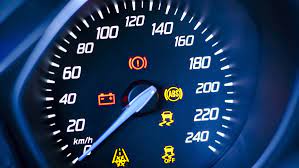Vehicle owners with old cars are all too familiar with the dreaded dashboard lights. This is because, naturally, their cars have outlived their expected lifespan and they are bound to need constant repairs just to run smoothly without any problems. But dashboard lights are only the first sign of something wrong with your car, and they can be very ambiguous. So how does one go about interpreting dashboard lights? Keep reading to find out.
Table of Contents
Scanning Fault Codes
Suppose you get the check engine sign on your dashboard. There are dozens upon dozens of things that can go wrong with a car’s engine. Using an OBD1 scanner (for vehicles manufactured between 1981 and 1996, otherwise you need an OBD2 scanner) can help you scan for the fault codes that the car’s system is generating. Keep in mind, however, that the scanner is only a device that gives you codes that still need interpretation to pinpoint exactly where the repairs need to be made, and the type of malfunction that your vehicle is experiencing. There are hundreds of fault codes, and even experienced mechanics do not know all of them by heart. Nowadays, you can find websites onlines that interpret these malfunction codes for a fee. Most scanners also come with a manual you can use to look up the interpretation of your malfunction codes.
The Problem With OBD1 Scanners
Unlike newer scanning devices, the older models that work for cars manufactured before 1996 can be very specific to the manufacturer. This means that you can’t use the same device to scan the malfunction of a Ford vehicle and a Honda vehicle – because they have different manufacturers. The device simply won’t be compatible with one vehicle or the other. Keep this in mind when shopping for an OBD1 scanner – you should only get a scanner that you’re sure will work for your vehicle.
Why Bother Using A Scanner At All
Even after you’ve scanned your vehicle and interpreted the OBD code, you’re going to need to take it to an experienced mechanic for repair. You might be wondering, why not just go directly to the mechanic? While a highly experienced mechanic can make an educated guess as to what is wrong with your car, he can never be as precise and accurate as a scanner – and there are only a few mechanics nowadays that can even come close to 70 % accuracy when making an educated guess. Most mechanics will have the device themselves, and they use it primarily because it saves them the hassle and guesswork involved with searching for a malfunction. With the scanner, they can open up the exact area of the engine that needs to be addressed and repair it. There is no exploratory part of their repairs, because the OBD scanner already showed the area that needs to be repaired and the type of fault that the mechanic will find.
OBD1 scanners are useful devices for owners of older vehicles, and can help owners understand the malfunctions that their cars have. They produce scan code that need to be interpreted correctly to give the area and type of malfunction.

